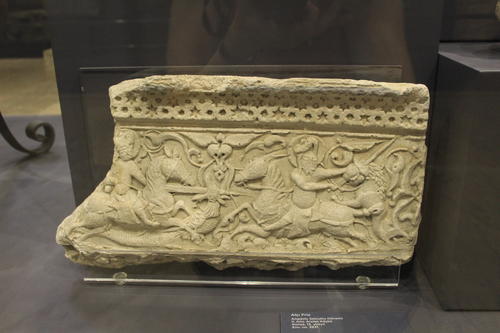Tiles, Stucco, and Wonder in Medieval Anatolia
Stucco frieze from köşk (kiosk) of Kilij Arslan, citadel of Konya, Turkey, late 12th century, TİEM, Istanbul, inv. no. 2831
Bildquelle: Photograph: P. Blessing, July 2018
Patricia Blessing
This project examines how man-made materials, in particular stucco and tiles, were employed in architectural decoration in the Islamic architecture of twelfth- to thirteenth-century Anatolia. Both materials have the capacity to elicit wonder, both because of their visual properties and because the process of making is not immediately apparent. Thus, these materials fit within the parameters of the Iranian polymath Qazvini’s (d. 1283/1284) definition of wonder (‘ajab in Arabic) as “the sense of bewilderment a person feels because of his inability to understand the cause of a thing”. This sense of wonder can be further explored with regard to architectural decoration where stucco appears as a material of inherent liquidity with its malleable nature, and with its potential to be sculpted, molded, cut, painted, and gilded. These qualities allow for stucco to emulate a range of other materials – stone, ceramic, wood – and indeed, it is rarely used in its own terms, as the whitish plaster that comprises it. Tiles mostly eschew the liquid nature of stucco in that they offer flat surfaces, in medieval Anatolia at times composed of multi-colored tile-mosaic, and at other times of monochrome tiles. The materials behind these surfaces are once more unclear to the untrained viewer, who sees the shine of the glaze, composed of a range of minerals, and does not perceive the clay underneath. Thus, the viewer is left to wonder at the source of beauty behind both stucco and tile. Based on case studies from late twelfth- to late-thirteenth century Konya, this project examines the mechanisms behind these materials’ role. At the conceptual level, these issues will connect to my larger book project A Malleable Empire: Past and Present, Nature and Artifice in Fifteenth-century Ottoman Architecture.

